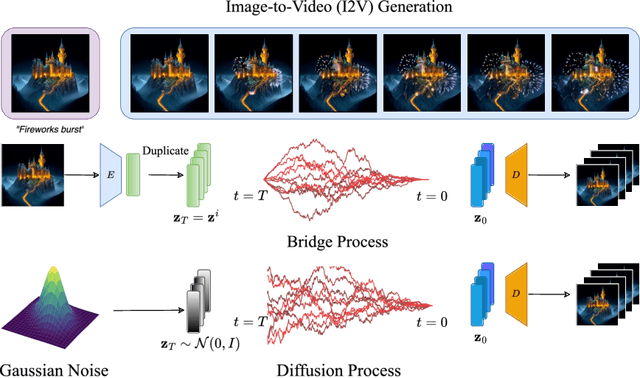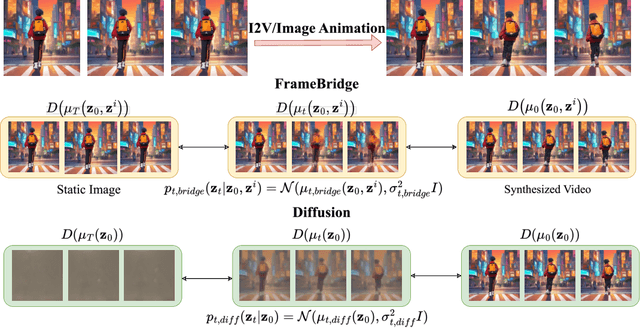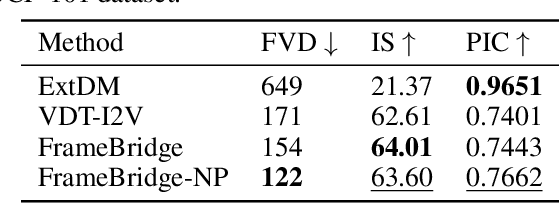Yuji Wang
IteRPrimE: Zero-shot Referring Image Segmentation with Iterative Grad-CAM Refinement and Primary Word Emphasis
Mar 02, 2025Abstract:Zero-shot Referring Image Segmentation (RIS) identifies the instance mask that best aligns with a specified referring expression without training and fine-tuning, significantly reducing the labor-intensive annotation process. Despite achieving commendable results, previous CLIP-based models have a critical drawback: the models exhibit a notable reduction in their capacity to discern relative spatial relationships of objects. This is because they generate all possible masks on an image and evaluate each masked region for similarity to the given expression, often resulting in decreased sensitivity to direct positional clues in text inputs. Moreover, most methods have weak abilities to manage relationships between primary words and their contexts, causing confusion and reduced accuracy in identifying the correct target region. To address these challenges, we propose IteRPrimE (Iterative Grad-CAM Refinement and Primary word Emphasis), which leverages a saliency heatmap through Grad-CAM from a Vision-Language Pre-trained (VLP) model for image-text matching. An iterative Grad-CAM refinement strategy is introduced to progressively enhance the model's focus on the target region and overcome positional insensitivity, creating a self-correcting effect. Additionally, we design the Primary Word Emphasis module to help the model handle complex semantic relations, enhancing its ability to attend to the intended object. Extensive experiments conducted on the RefCOCO/+/g, and PhraseCut benchmarks demonstrate that IteRPrimE outperforms previous state-of-the-art zero-shot methods, particularly excelling in out-of-domain scenarios.
ARMOR: Shielding Unlearnable Examples against Data Augmentation
Jan 15, 2025Abstract:Private data, when published online, may be collected by unauthorized parties to train deep neural networks (DNNs). To protect privacy, defensive noises can be added to original samples to degrade their learnability by DNNs. Recently, unlearnable examples are proposed to minimize the training loss such that the model learns almost nothing. However, raw data are often pre-processed before being used for training, which may restore the private information of protected data. In this paper, we reveal the data privacy violation induced by data augmentation, a commonly used data pre-processing technique to improve model generalization capability, which is the first of its kind as far as we are concerned. We demonstrate that data augmentation can significantly raise the accuracy of the model trained on unlearnable examples from 21.3% to 66.1%. To address this issue, we propose a defense framework, dubbed ARMOR, to protect data privacy from potential breaches of data augmentation. To overcome the difficulty of having no access to the model training process, we design a non-local module-assisted surrogate model that better captures the effect of data augmentation. In addition, we design a surrogate augmentation selection strategy that maximizes distribution alignment between augmented and non-augmented samples, to choose the optimal augmentation strategy for each class. We also use a dynamic step size adjustment algorithm to enhance the defensive noise generation process. Extensive experiments are conducted on 4 datasets and 5 data augmentation methods to verify the performance of ARMOR. Comparisons with 6 state-of-the-art defense methods have demonstrated that ARMOR can preserve the unlearnability of protected private data under data augmentation. ARMOR reduces the test accuracy of the model trained on augmented protected samples by as much as 60% more than baselines.
Hidden Data Privacy Breaches in Federated Learning
Nov 27, 2024



Abstract:Federated Learning (FL) emerged as a paradigm for conducting machine learning across broad and decentralized datasets, promising enhanced privacy by obviating the need for direct data sharing. However, recent studies show that attackers can steal private data through model manipulation or gradient analysis. Existing attacks are constrained by low theft quantity or low-resolution data, and they are often detected through anomaly monitoring in gradients or weights. In this paper, we propose a novel data-reconstruction attack leveraging malicious code injection, supported by two key techniques, i.e., distinctive and sparse encoding design and block partitioning. Unlike conventional methods that require detectable changes to the model, our method stealthily embeds a hidden model using parameter sharing to systematically extract sensitive data. The Fibonacci-based index design ensures efficient, structured retrieval of memorized data, while the block partitioning method enhances our method's capability to handle high-resolution images by dividing them into smaller, manageable units. Extensive experiments on 4 datasets confirmed that our method is superior to the five state-of-the-art data-reconstruction attacks under the five respective detection methods. Our method can handle large-scale and high-resolution data without being detected or mitigated by state-of-the-art data reconstruction defense methods. In contrast to baselines, our method can be directly applied to both FedAVG and FedSGD scenarios, underscoring the need for developers to devise new defenses against such vulnerabilities. We will open-source our code upon acceptance.
FrameBridge: Improving Image-to-Video Generation with Bridge Models
Oct 20, 2024



Abstract:Image-to-video (I2V) generation is gaining increasing attention with its wide application in video synthesis. Recently, diffusion-based I2V models have achieved remarkable progress given their novel design on network architecture, cascaded framework, and motion representation. However, restricted by their noise-to-data generation process, diffusion-based methods inevitably suffer the difficulty to generate video samples with both appearance consistency and temporal coherence from an uninformative Gaussian noise, which may limit their synthesis quality. In this work, we present FrameBridge, taking the given static image as the prior of video target and establishing a tractable bridge model between them. By formulating I2V synthesis as a frames-to-frames generation task and modelling it with a data-to-data process, we fully exploit the information in input image and facilitate the generative model to learn the image animation process. In two popular settings of training I2V models, namely fine-tuning a pre-trained text-to-video (T2V) model or training from scratch, we further propose two techniques, SNR-Aligned Fine-tuning (SAF) and neural prior, which improve the fine-tuning efficiency of diffusion-based T2V models to FrameBridge and the synthesis quality of bridge-based I2V models respectively. Experiments conducted on WebVid-2M and UCF-101 demonstrate that: (1) our FrameBridge achieves superior I2V quality in comparison with the diffusion counterpart (zero-shot FVD 83 vs. 176 on MSR-VTT and non-zero-shot FVD 122 vs. 171 on UCF-101); (2) our proposed SAF and neural prior effectively enhance the ability of bridge-based I2V models in the scenarios of fine-tuning and training from scratch. Demo samples can be visited at: https://framebridge-demo.github.io/.
Robust Multimodal Learning via Representation Decoupling
Jul 05, 2024Abstract:Multimodal learning robust to missing modality has attracted increasing attention due to its practicality. Existing methods tend to address it by learning a common subspace representation for different modality combinations. However, we reveal that they are sub-optimal due to their implicit constraint on intra-class representation. Specifically, the sample with different modalities within the same class will be forced to learn representations in the same direction. This hinders the model from capturing modality-specific information, resulting in insufficient learning. To this end, we propose a novel Decoupled Multimodal Representation Network (DMRNet) to assist robust multimodal learning. Specifically, DMRNet models the input from different modality combinations as a probabilistic distribution instead of a fixed point in the latent space, and samples embeddings from the distribution for the prediction module to calculate the task loss. As a result, the direction constraint from the loss minimization is blocked by the sampled representation. This relaxes the constraint on the inference representation and enables the model to capture the specific information for different modality combinations. Furthermore, we introduce a hard combination regularizer to prevent DMRNet from unbalanced training by guiding it to pay more attention to hard modality combinations. Finally, extensive experiments on multimodal classification and segmentation tasks demonstrate that the proposed DMRNet outperforms the state-of-the-art significantly.
Studious Bob Fight Back Against Jailbreaking via Prompt Adversarial Tuning
Feb 09, 2024Abstract:Although Large Language Models (LLMs) have achieved tremendous success in various applications, they are also susceptible to certain prompts that can induce them to bypass built-in safety measures and provide dangerous or illegal content, a phenomenon known as jailbreak. To protect LLMs from producing harmful information, various defense strategies are proposed, with most focusing on content filtering or adversarial training of models. In this paper, we propose an approach named Prompt Adversarial Tuning (PAT) to train a defense control mechanism, which is then embedded as a prefix to user prompts to implement our defense strategy. We design a training process similar to adversarial training to achieve our optimized goal, alternating between updating attack and defense controls. To our knowledge, we are the first to implement defense from the perspective of prompt tuning. Once employed, our method will hardly impact the operational efficiency of LLMs. Experiments show that our method is effective in both black-box and white-box settings, reducing the success rate of advanced attacks to nearly 0 while maintaining the benign answer rate of 80% to simple benign questions. Our work might potentially chart a new perspective for future explorations in LLM security.
 Add to Chrome
Add to Chrome Add to Firefox
Add to Firefox Add to Edge
Add to Edge